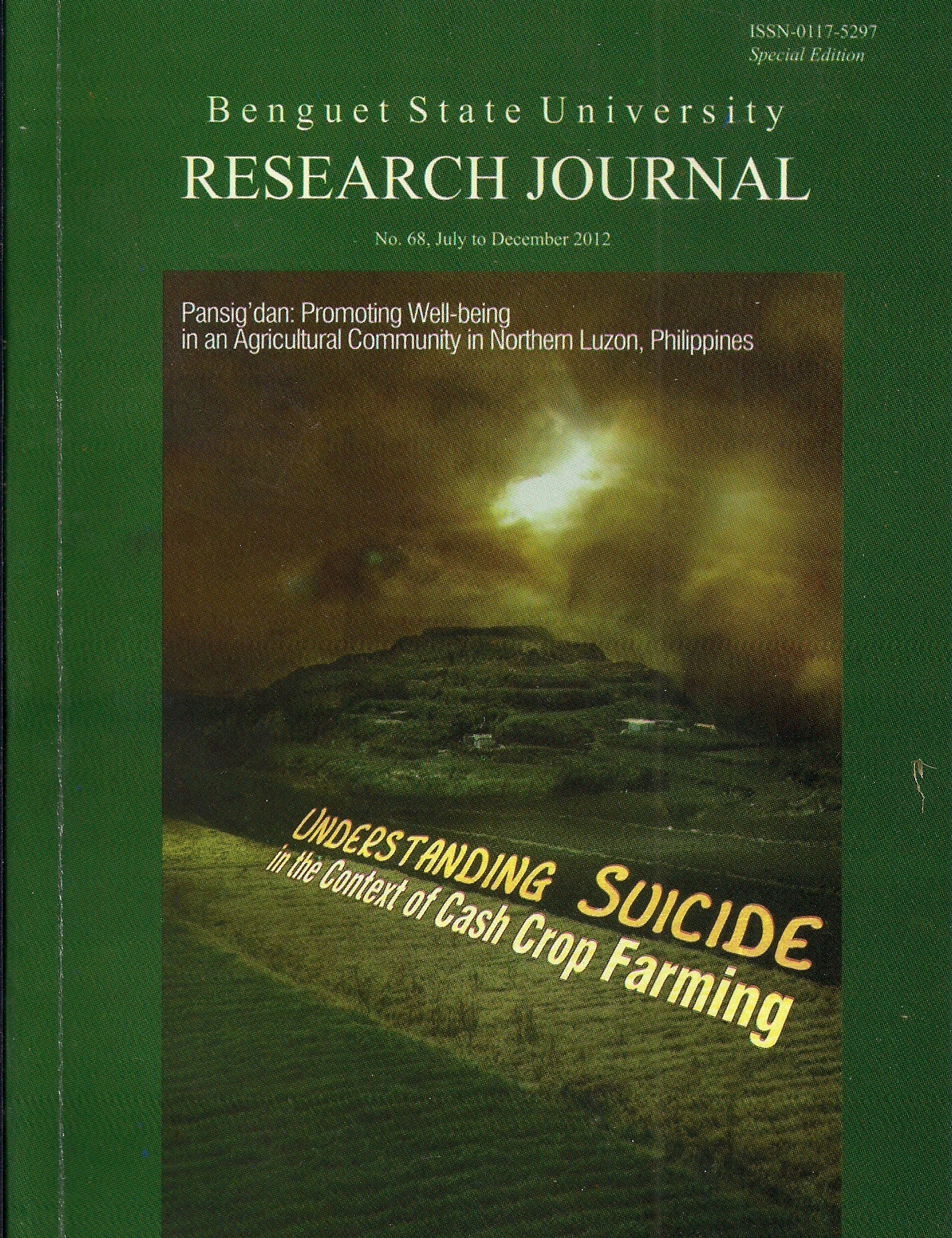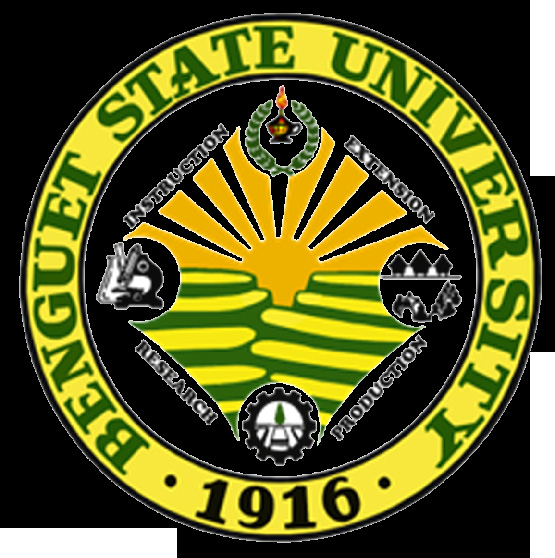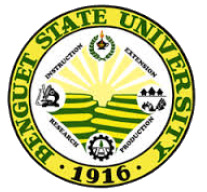Pansig’dan: Promoting Well-being in an Agricultural Community in...

Pansig’dan: Promoting Well-being in an Agricultural Community in Northern Luzon, Philippines
Understanding Suicide in the Context of Cash Crop Farming
RUTH SIDCHOGAN-BATANI
STANLEY F. ANONGOS JR.
MURSHA D. GAPASIN
RACHELE D. DE GUZMAN
BETTY C. LISTINO
BEVERLY C. SA-AO
TECAH C. SAGANDOY
GREGORIO C. TAAG

Benguet State University
RESEARCH JOURNAL
This multidisciplinary scientific journal publishes selected
papers but not limited to those presented during the
annual Benguet State University Agency In-House Review
(Agriculture, Forestry and Natural Resources, Social and
Education Sectors).
Philippine Copyright 2013 by Benguet State University
All rights reserved. Reproduction and dissemination of material in this information product
for educational or other non-commercial purposes are authorized without any prior written
permission from the publisher provided the source is fully acknowledged. Reproduction of
material in this information product for resale or other commercial purposes is prohibited
without written permission of the copyright holder.
FOR ETHICAL REASONS, the name of the community has been deliberately dropped.
This should be observed at all times when citing and qouting any part of this report. Most
of the photographs used were taken from the different vegetable farming communities of
Benguet. Pesticides mentioned were listed according to their chemical names.
Publication Editing, Design and Layout: Betty C. Listino
Cover Photos: Betty C. Listino and Gladys T. Maximo
Cover Design: Rainel Lee D. Aquino
Reviewers:
Dr. Ryan C. Guinaran, Dr. Joseph Alunes, Estrella Acos, Silvestre L. Kudan, Noel C. Villa,
Cirilo A. Lagman, Jimmy Fong, Ann Loreto Tamayo, Grace T. Bengwayan,
Riaflor B. Rebolledo, Norylie W. Tagtag, Jennyline Sabado-Tabangcura, Gladys T.
Maximo, Koji Imaizumi, Estela H. Acquiapat, Letty S. Calawa, Octavio B. Placido,
Welben Ulalan
Photo Credits:
Gladys T. Maximo, Edgar Z. Kawig, Hencio Balinggan,
Regina B. Vinat-an, Jemima B. Manait
All other photographs are from Project Pansig’dan’s photo collection
EXECUTIVE SUMMARY
The journey of understanding the complexities of suicide phenomenon in a chemical based rural farming
community has brought so much reflexivity. The project team clearly remembers the experience of approaching a
phenomenon that initially brought numbing silence, discomfort and fear. But as students of the social world, this
action research has to be pursued.
The project is an exploration of how a commercial farming community presents itself as a landscape for
decisions and choices. It also tried to understand the manifest problem of suicide and the recent alarming suicide
incidents in the study site. Using focus group discussions, key informant interviews, and informal discussions,
the research team consisting several disciplinal lenses tried to discern the respondent’s notions of suicide and to
understand the context and the meanings linked to particular interactions taking place.
Profile of suicide cases show that victims are relatively young, ranging from ages 15 to 24; 73% of them
are males. There are 52 suicide cases counted starting from the first case in 1961 up to the last case recorded in
2010. Almost all of these cases were committed using pesticides. A suicide cluster was observed in 2008-2010
registering 38 deaths, 12 of which is caused by paraquat, 10 by pyrethoid and eight by organophosphate.
Results also show that self-inflicted injuries usually happen when the victims are under the influence
of alcohol. However, on why these acts were committed, findings reveal that chemical-based farming with all
its pesticide use, disposal, management as well as the dependency to “modern” technologies has been shaping
the farmer’s character of everyday transactions. The labor demands as well as the desire to hit the “jackpot”
price make farming households slave to their gardens-and many times at the expense of personal leisure and
relationships. This condition has to be understood in the context of farming communities that have limited access
to balanced information on alternative technologies and education materials that are needed in self-determining
decisions.
On the surface, the reasons of self-inflicted injuries range from being scolded, being frustrated with love,
being teased, having dreams of the dead, family misunderstanding to name a few, but closer examinations reveal
that there are suicide correlates interacting together. Person-level and rational issues are usually reinforced by the
person’s environment such as the presence of enabling factors.
The multiplicity of conditions such as the predisposing, reinforcing and enabling factors have been
implicated. Predisposing factors emanate from the market-oriented economy and the loss of socialization support
coupled with stressors and learned helplessness. The condition of producing for the market created a lifestyle
that is in accordance with market demands. Since parents have to always catch-up with farm work, their time
poverty robs the younger members of the family that needed care and attention. Teenagers are left to tend their
own emotional conditions which cause them to turn to their peers resulting to complex outcomes.
Reinforcing factors to include the quality of interaction that one has in the family, peer group and the
larger community may shape social behaviors, too. In the larger environment, the “bite” of satirical humor, locally
called toknang can serve as an avenue for self expression although it can also have dangerous implications. The
contagion effect or the ginnuyyod has also been marked socially with the young imitating the others who have
committed suicide. All these have to be understood in the context of grief and bereavement which, if not properly
processed, can result to self-harm.
Enabling factors such as the availability and accessibility of instruments which make thoughts of suicide
more realizable is another layer. Drinking alcohol disinhibits sound behavior. In the same way, the availability of
pesticides almost always guarantee their use for self-inflicted injuries.
The commercial agricultural landscape carved to produce for the market is indeed a fertile ground for cash
and material enrichment, ironically, it is the same landscape where the manifest problem of self-inflicted injury
through pesticide ingestion has become prevalent. How the community “make sense” of suicide is revealing of
euphemisms which have to be understood in the light where the community themselves do not seem to understand
what is happening.
However, this research project may still be limited even as it captured correlates of suicide that include
predisposing factors, reinforcing factors and enabling factors as there have been changing dynamics of the
community. The qualitative nature of the research as well as certain ethical guidelines that guided the team
considering the intrusive character of the project are other factors that limited its scope. Nevertheless, all these
provide the material and social context that relate to the pervasiveness of risk factors that have to be considered
in understanding and addressing the phenomenon.
RATIONALE AND OBJECTIVES
“Pansig’dan1: promoting Well being in an Agricultural Community in Northern Luzon”, is an
interdisciplinary action research and an extension project that aims to understand the phenomenon of youth
suicide through pesticide poisoning in the context of cash crop farming. The end goal is to be able to provide
appropriate recommendations to the concerned stakeholders of the affected communities. It is a response to the
alarming suicide incidence that started in 2008 until the first quarter of 2009 in the northern vegetable farming
towns of Benguet, a province of the Cordillera region, Philippines.
Self-inflicted injuries, to begin with has been a historical and chronic problem in Benguet. Official health
data of the province in the early 70s placed suicide as the 10th leading cause of mortality (Benguet Profile, 1970).
The project team was formed by Benguet State University (BSU) through the Institute of Social Research
and Development (ISRD) with the Department of Social Sciences and selected faculty members of the College
of Teacher Education and ResearchMate Inc., a local non-government organization for information management
and promotion. It started as a response to the call of a women’s organization for extension activities in one of the
affected communities. A community study was later conceptualized as a result of the active participation of ISRD
and BSU’s Gender and Development Program to the Provincial Pesticide Task Force created by the province of
Benguet to investigate the alarming deaths reported by affected families and clinics/hospitals catering to these
farming communities. The extension site of the project also became the location of the study because of the
positive and strong support of the community’s women organization.
The study is composed of four inter-disciplinary fields: anthropology, economics, history and psychology.
The extension activities conducted with the community were facilitated by the researchers together with two
psychologists and a development communication specialist. The project was implemented in 2009 from June
to September and in 2012 from August to September. A memorandum of Agreement between the study site’s
municipal government and BSU was signed in August 2009 to give the project team the personality to conduct
its activities in the area.
The study is largely qualitative. Except for a semi-structured interview questionnaire used to obtain the
suicide profiles and economic data, the team mainly gathered its data through Key Informant Interviews (KII),
Focus Group Discussions and informal discussions during community assemblies for the project’s extension
activities. The anthropological part of the study did a follow-up on FGD respondents by conducting KIIs.
Additional FGDs were likewise facilitated with four groups in the community’s public secondary school.
There was one FGD conducted with students of the secondary school; one FGD with parents and/or
relatives of those who committed suicide and one FGD for the elderly. The KIIs were conducted separately with
this groups including the community’s local government officials.
Respondents of the study were purposively sampled. The following were the inclusion criteria: resident of
the community; a farmer for atleast two years; present in the community at the time of interview; and willing to
be interviewed.
1 In the study site’s native language, pansigedan or pansig’dan comes from the Kankana-ey root word siged, which pertains to a
“good” condition or the state of being well. Pansigedan refers to anything that favors the attainment of that state or condition.
INFORMATION FOR CONTRIBUTORS
(Abridged/improved from the editorial policies of the Benguet State University)
1. All manuscripts must be the result of research activities (technical or social) that are relevant to the development
thrust of the University and should not have been published elsewhere.
2. Acceptance of manuscript is on the basis of the review and approval by a corps of technical editors and selected
referees.
3. Original photos should be submitted in PNG or JPEG format with corresponding captions.
4. The manuscript should not exceed 40 pages, typed double spaced in 12-point Times New Roman on one side of
81/2” paper with margins of 3.81 cm on the left and 2.54 cm top, right and bottom and must be submitted in hard
and electronic copy via bsupublications@gmail.com using MS Word Program.
5. The manuscript should be organized in the following order: (a) Title; (b) Authors/s; (c) Authors/s position;
(d) Abstract; (e) Introduction; (f) Materials and Methods; (g) Results and Discussion; (h) Conclusions and
Recommendations; (i) Acknowledgment, optional; and (j) Literature Cited ; and written all centered.
6. The title should be a precise and concise description of the contents of the manuscripts without abbreviations and
typed in upper case. If the paper is a portion of a larger manuscript, which shall be serialized and will be indicated
in a superscript followed by a brief explanation.
7. The author(s) name(s) is/are written in this way: initial letter for the middle names only, first and family names in
full and typed in title case. Senior author comes first in case of more than one author.
8. The abstract must be 200 words or less, summarizing the main points of the articles.
9. The introduction should contain scope and statement of the problem, brief survey of previous work and objectives
and importance of the study.
10. Citations in the text follows the name and year system, e. g.
Single Author:
(Adeyemo, 2010), Yeo (2009) or Boquiren (n.d.)
Two Authors:
Pladio and Villasenor (2004), (Pladio and Villasenor, 2004)
More than Two Authors:
Folbre et al. (2011) or (Folbre et al., 2011).
11. Materials and methods should describe very concisely but comprehensively the materials used, techniques, and
lay-out of the research.
12. Scientific names and other foreign expressions such as in situ, et al., i.e., and other similar expressions are italicized.
Technical terms, abbreviations and acronyms must be defined.
13. In abbreviating or using acronyms, the System International-Units (SI) of the metric system should be followed.
Such abbreviations or acronyms should be written first in full before the truncated terms in parenthesis, e.g. thin-
layer chromatography (TLC). If this information is given in the abstract, it should be re-identified when mentioned
the first time.
14. The results should be presented logically and in objective way and conclusions stated as valid facts.
15. The discussion of results should lead to interpreting significance and /or possible similarity or discrepancy from
previous findings.
16. A statement on conflict of interest should be declared by authors before the Acknowledgment section. Where
appropriate, Conflict of Interest statements may be in instances such as:” There are no known conflicts interests
associated with the publication” or “There has been no significant financial support for the work that could have
influenced its outcome.” Whenever appropriate, acknowledgements are made relevant for contributions in terms
of financial and technical support.
17. Literature cited in the text should be indicated as follows: Consolacion (2000) or (Consolacion, 2000); for two
authors, Colting and Maddul (1999) or (Colting and Maddul, 1999); for more than two authors, Bucu et al. (1999)
or (Bucu et al., 1999).
18. Electronic sources must be cited as follows: author (s), year, title, date of retrieval and the complete Uniform
Resource Locator (URL) of the site.
19. Listing of literature cited is by author(s) in alphabetical order. The list contains: author (s), year, title of literature,
publisher, address of publisher, volume and issue numbers and inclusive pages (printed as 1(2):1-9). Names of
authors are typed in upper case: for single author, surname (separated by a comma) first before the initials of the
given and middle names; for multiple authors, surname then initials of senior author followed by initials then
surnames of succeeding authors. Authors are separated by commas.
Single author:
Mondejar, L.A. 1998. Understanding Student Judgments of Teaching Performance: A Conjoint Approach.
Unpublished Doctoral Dissertation, University of the Philippines. Diliman. Quezon City.
Durano, M. 2008. From profit to provisioning: A gender equitable public policy. Development Alternatives
with Women for a New Era. QC: Miriam College.
Eriksen, T. 2001. Small Places, Large Issues. An introduction to Social and Cultural Anthropology. 2nd ed.
London: Pluto Press.
Two authors:
Hallauer, A. R. and F. O. Miranda. 1980. Quantitative Genetics in Maize Breeding. Iowa State University
Press. Ames, Iowa. Pp. 49-52.
Carrasco, C. and M. Serrano. 2011. Lights and Shadows of Household Satellite Accounts: The Case of
Catalonia, Spain. Feminist Economics 17 (2): 68-85. IAFFE: Routledge Taylor and Francis Group.
Crisologo, L. C. and L. Berlage. 2006. Bargaining in rural households: a study of decision on labor market
participation in the Cordillera. The Philippine Review of Economics. 48 (2): 249- 537.
More than two authors:
Linsley, R., J. Franzini, D. Freyburg and G. Tchobanoglous. 1992. Water Resources Engineering. 4th ed.
McGraw-Hill, Inc. New Jersey, USA.Pp. 510-532.
Aguilar, N. O., B. L. Cardenas and M. A. O. Cajano. 2000. Spore and Seed bearing Plants of Mount Pulag,
Benguet, Philippines. Museum of Natural History. UPLB, College, Laguna, Philippines.
Braunstein, E. B., I. P. Van Staveren and D. Tavani. 2011. Embeding care and unpaid work in Macroeconomic
Modelling. A structural Approach. Feminist Economics. 17, 4-31.
20. If necessary, protocols for manuscript preparation can be requested from the Editorial Board.
21. Please see the latest issue of the Journal for concrete details as to format.

BSU Research Journal No. 75
BSU Research Journal No. 75
VISION
A premier State University in Asia.
MISSION
Development of people imbued with academic excellence, social conscience and productivity; and
actively generating and promoting environment-friendly, useful technologies to improve quality of life.
GOALS
1. Strengthen and sustain a working environment conducive for excellence;
2. Provide quality education that will produce globally competitive and well-rounded graduates;
3. Provide quality and client-responsive research and extension services;
4. Strengthen and enhance institutional capability in generating revenue towards self-reliance
5. Develop and strengthen quality management system towards economy; and
6. Strengthen and expand private public partnership.
PURPOSE
* To provide quality education that will produce globally-competitive graduates;
* To generate and disseminate appropriate knowledge and technologies that will promote sustainable
resource development;
* To strengthen and enhance institutional capability in generating revenue towards self-reliance;
* To establish competent and effective services geared towards efficiency and economy; and
* To develop harmonious and cooperative University Community relationships.
Benguet State University
RESEARCH JOURNAL
All communications should be addressed to:
THE EDITOR
BSU Research Journal
Benguet State University
La Trinidad 2601 Benguet, Philippines
Telefax: (+6374) 422-5547
Email address: bsupublications@gmail.com
Website: www.bsu.edu.ph
10 10